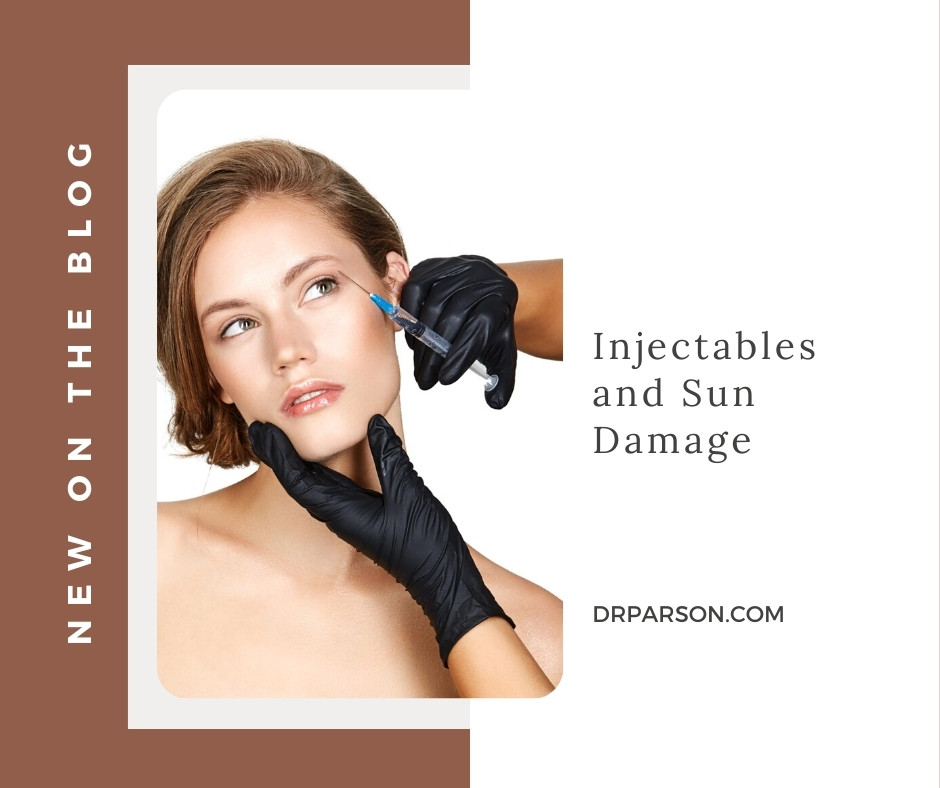
21 Aug Injectables and Sun Damage
Can sun exposure damage injectables like Botox and fillers? Possibly, according to some experts, which is yet another reason to lather on the sunscreen (and invest in SPF 30+ lip balm). Botox and fillers go together like summer and sun hats at Parson Skin Center, and everyone wants to know how to make their injectables last as long as possible. Some studies have shown that UV rays can break down hyaluronic acid (HA) faster than it normally does, and most dermal fillers are made using HA. Fillers are typically used to get rid of lines and smooth out wrinkles while adding volume to the face, lips and even tops of the hands.
How long fillers last varies based on the injection site, type of filler, and number of syringes (units) used. Most fillers last 6 – 18 months on average, but may not last quite as long if you’re regularly in the sun without protection. It’s also important to remember that UV exposure can negatively affect the healing process right after injection, potentially triggering an inflammation. However, don’t worry that if you go out in the sun that your fillers will “dissolve.” You probably won’t notice any difference, but there is a possibility that you’ll need more injections sooner than you normally would.
Botox and Sunbathing
Botox isn’t quite as concerning with UV damage. It works by paralyzing facial muscles, so the sun doesn’t have much of an impact. Botox is absorbed within two days being injected, so there is very little risk. However, if there is bruising from the injection, sun exposure can cause hyperpigmentation—so avoid the sun for at least two days after your injections. Wear sunscreen, sunglasses, and a wide-brimmed hat when exposed to the sun. There is also a slim chance that the blood vessels can become dilated with sun exposure, thus increasing circulation and diffusing Botox. Of course, sun damage is a major cause of lines and wrinkles, so continuing to expose yourself to it without protection will just lead to more lines, wrinkles, and creases that will need to be corrected in the future with Botox.
If you think the sun is making injectables not last as long, talk to your provider. If discoloration is an issue, regardless of the cause, there are many topicals and in-office treatments to address this problem such as laser skin rejuvenation, chemical peels, and microneedling. Using a medical-grade topical at home to even out skin tone can also help. These topicals typically have brighteners like vitamin C and kojic acid.
Preventing Sun Damage
Sunscreen is a must year-round, but especially in the summer and after injections. UV rays break down the body’s structural proteins, including collagen and elastin, which causes fine lines, skin laxity, wrinkles, and even leathery skin. All of these conditions can affect the outcome of dermal injections. If possible, avoid the sun entirely for at least four hours after getting Botox and for one week after getting fillers.
In absolute worse case scenarios, some fillers may be dissolved. When this happens, it is usually because of a botched job and/or lack of proper aftercare rather than UV damage. These clients often want a “re-do” and not to get rid of more volume altogether. There are also some cases of clients having older fillers that are stubbornly sticking around and just aren’t as natural-looking as the latest fillers. Only HA fillers can be dissolved, and it is not as simple as the injection process. Dissolving fillers is a precise art, but it can be done. We often see clients who have gone overboard on fillers elsewhere and are now seeking a more natural look. All fillers dissolve at some point on their own, but sometimes you’d like to speed up that process. For both getting fillers and having them removed, it is necessary to find a highly-skilled injector. That’s what you get at Parson Skin Center, where we are committed to client satisfaction and carrying only the best, most natural-looking injectables. To schedule your consult or appointment, give us a call during business hours or complete the online contact form right now.
